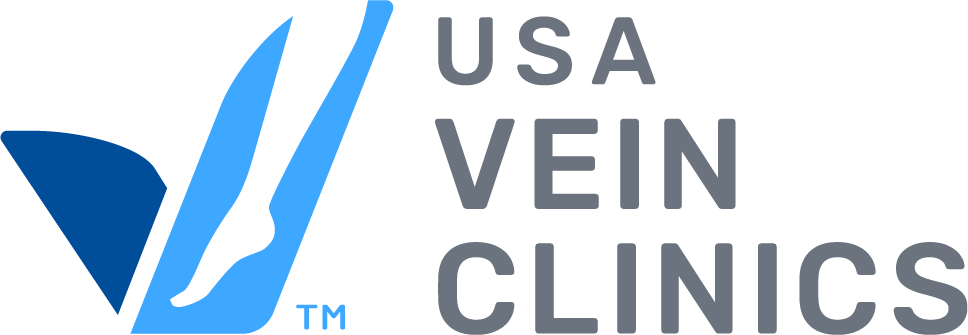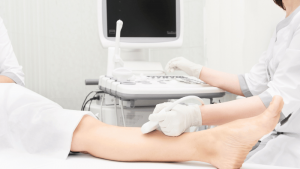
You may wonder if insurance covers procedures when exploring varicose and spider vein treatment options. Most major health plans cover a range of medically necessary vein treatments.
Medical vein procedures address pain, swelling, and the possible complications of vein disease, such as ulcers and blood clots are usually covered. USA Vein Clinics works with most insurance plans and offers medically necessary treatments for vein conditions.
Understanding Insurance Coverage for Vein Treatments
Insurance will cover vein treatments when they are needed for health reasons. Treatments that are considered cosmetic may not be covered by insurance. Factors such as the symptoms and potential complications of your vein condition determine if treatment is cosmetic or medically necessary.
Understanding Conditions That Qualify Vein Treatments for Insurance Coverage
Chronic venous insufficiency, a condition affecting the veins in the legs, can cause a variety of symptoms, including pain, swelling, and skin discoloration. In severe cases, it can lead to more serious complications like venous ulcers or deep vein thrombosis (DVT). DVT is a blood clot that, if it breaks free, travels to the arteries in the lungs and becomes life-threatening.
Given the potential health risks associated with vein disease, many insurance providers recognize the medical necessity of varicose vein treatment.
If you are concerned if your vein treatment will be covered, USA Vein Clinics’ online scheduling tool can verify your insurance when you book your treatment.
When Vein Treatment is Considered Medical Necessary
Medical necessity means a treatment addresses a health concern, such as pain or the risk of blood clots. Vein specialists at USA Vein Clinics can determine if your vein condition is considered medically necessary treatment.
If your doctor deems a treatment medically necessary, insurance typically covers it. Your insurance provider may review your medical records to verify coverage before authorizing payment.
Safe and Secure Online Scheduling
Explanation of Cosmetic vs. Medical Necessary Treatments
A treatment is considered cosmetic if it primarily addresses appearance concerns, like spider veins that don’t cause symptoms. Medically necessary treatments, on the other hand, are essential for diagnosing or treating a health condition, such as varicose veins with symptoms like pain, swelling, or skin ulcers.
To determine medical necessity, a vein specialist will assess:
- Symptoms: The severity of symptoms, including pain, swelling, and skin changes.
- Risk factors: The patient’s risk of developing complications like blood clots or venous ulcers
- Medical history: Any underlying health conditions that may contribute to vein disease.
By carefully evaluating these factors, a vein expert can determine if a specific treatment is medically necessary and eligible for insurance coverage.
Is Varicose Vein Treatment Covered by Insurance?
Insurance coverage for varicose vein treatment depends on medical necessity. Our vein specialists at USA Vein Clinics can accurately assess your condition and determine if your treatment qualifies for insurance coverage and the best course of action for your vein treatment.
Is Spider Vein Treatment Covered by Insurance?
While many people seek spider vein treatment for cosmetic reasons, it’s important to note that spider veins can sometimes indicate underlying medical conditions. In these cases, insurance may cover the treatment.
Types of Insurance Coverage for Vein Treatment
At USA Vein Clinics, our vein specialists treat varicose veins, spider veins, venous ulcers, restless leg syndrome, and other venous conditions. We are often asked:
- Does Blue Cross/Blue Shield, United Healthcare, Cigna and other healthcare providers cover varicose or spider vein treatment? Insurance coverage depends on benefit eligibility, as your specific benefit plan outlines. We can help verify if BCBS will cover your treatment.
- Does Medicare cover Varicose vein treatment? Yes, Medicare Part B covers varicose vein treatments if they are medically necessary and meet certain criteria.
- Does Medicaid cover varicose vein treatment? Generally, yes.
Call for Information on Insurance Coverage
How to Verify Insurance Benefits for Vein Treatment
USA Vein Clinics works with most insurance plans. We also offer an easy way to discover if we accept your insurance plan. Our online scheduling tool will verify your insurance coverage when you book an appointment. You’ll see your insurance eligibility before you confirm your appointment.
For more information, call 888.768.3467. Our insurance specialists will verify your coverage and answer all your questions.
How Much Do Vein Treatments Cost?
The cost of vein treatment depends on several factors, including the specific procedure, the severity of your condition, the number of required sessions, and your insurance coverage.
Factors That Determine Vein Treatment Cost
Anesthesia
The need for anesthesia can significantly affect the overall cost of vein treatments. Procedures requiring local or general anesthesia may cost more due to the involvement of additional medical staff, equipment, and medication.
Number of Treatment Sessions
Some vein conditions may require multiple treatment sessions to achieve optimal results. The total cost increases with the number of sessions needed, which depends on the severity of your condition and the type of treatment selected.
Treatment Procedure
Different vein treatments, such as sclerotherapy, laser therapy, or endovenous ablation, have varying price points. The complexity and duration of the procedure often determine the cost. The team at your local USA Vein Clinics can break down the costs of each treatment. Call 888-768-3467 to learn more.
Insurance Coverage
Your insurance plan greatly influences the out-of-pocket cost of vein treatment. Coverage depends on your provider, the type of insurance (HMO or PPO), if your provider is in-network or out-of-network, and whether the treatment is medically necessary.
Out-of-Pocket Costs
No matter your insurance coverage, you will be responsible for out-of-pocket costs. The exact costs can depend on your specific plan but often include:
Copay: This is the fixed amount you must pay for a covered healthcare service. Insurance plans with lower monthly premiums often have higher copays, and vice versa.
Coinsurance: Some health insurance plans require paying a percentage of expenses after meeting your deductible instead of a co-pay. For example, an 80/20 plan means that after reaching your deductible, your plan will pay 80% of expenses. You will be responsible for the other 20% until you reach your plan’s out-of-pocket maximum.
Deductible: This is the amount you pay for covered services before your health insurance plan takes over and starts to pay. If you have a $1,000 deductible, you must pay for all healthcare services until costs reach $1,000. Not all insurance plans involve a deductible. Deductibles will restart at the beginning of a new plan year.
Payment Options for Non-Covered Procedures
There are a few ways to pay for non-covered procedures. USA Vein Clinics offers payment options such as self-payment plans and financing through CareCredit. You can learn more about paying for your non-covered treatment here.
Get Started with USA Vein Clinics
Making an appointment with the trusted professionals at USA Vein Clinics is the first step toward finding the best vein treatment for you. We have the largest network of vein clinics in the U.S. and accept most insurance plans. Call us today or use our online scheduling system to get started.
Frequently Asked Questions
Do I Need a Referral to See a Vein Specialist?
You don’t generally need a referral to see the vein specialists at USA Vein Clinics. To make an appointment, call us today at 888.768.3467.
What are the common vein treatments that insurance covers?
Insurance often covers minimally invasive treatments such as Endovenous Laser Therapy (EVLT), Radiofrequency Ablation (RFA), sclerotherapy, ClariVein® Varithena, and VenaSeal™.









